- Home
- Injections
- Laser Treatments
- Specialties
Specialtiesview all
- Other Treatments
- Before After Photos
Before After Photosview all
- Contact Us
- Doctor And Staff
- About Celibre
- Blogs
We have lots of patients that use tanning beds. Especially in sunny Southern California, many like the idea of being bronzed year round. What many young consumers do not realize though is just how damaging tanning beds can be for your skin. A division of the WHO (World Health Org.) called IARC (Intl. Agency for Research on Cancer) officially lists UV radiation-emitting tanning devices (tanning beds/lamps) as one of the most dangerous forms of cancer-causing radiation. In fact, for many states and countries, tanning salons are restricted to those only over 18 yrs of age. For those under 18, they requiring in-person, written parental consent and/or a physician prescription.
Tanning beds offer more risk than traditional sun bathing. Research has shown that the risk of melanoma increases by 75% when tanning beds are used before the age of thirty. In addition, Dermatology groups now list photo-damage (sun and tanning beds) as the number one contributing factor to the aging process.
Los Angeles, Laser Sun Spot Removal
Laser Age Spot Removal Free Consultation
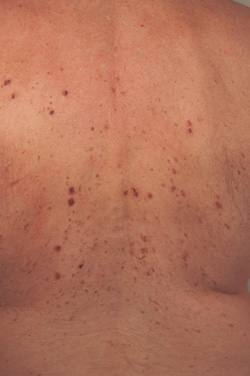
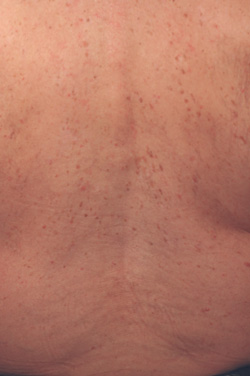
Laser Age Spot Removal Before and After Pictures
Lori Ishii Haney, RN MEPC
Medical Laser Safety Officer
Chances are you’ve seen poikiloderma—you just didn’t know what it was! Poikiloderma is the discoloration of the neck and chest that can happen after years and years of sun exposure. That’s right…Poikiloderma is a very specific form of sun damage. It occurs on the sides of the neck (not on the front, which is shadowed by the chin) and the chest, usually where the shirt and collar don’t cover the skin.
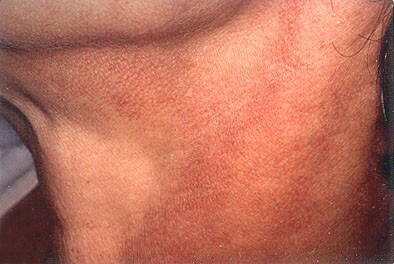
Here in sunny Southern California, poikiloderma occurs in both men and women. Although many of us remember to wear sunscreen on our faces, we often neglect the neck and chest. As a result, and over the years, these areas accumulate sun damage Poikiloderma rears its ugly head, mostly in our thirties and forties.
Now that you know the name, where it happens, and what causes it, you may wonder why it looks the way it does? The redness that is a hallmark of Poikiloderma occurs from the development of tiny blood vessels near the surface of the skin. It may look like a permanent sunburn and blanche (turn white) when you press on it. Unlike a temporary sunburn, it never goes away and doesn’t hurt. The brown discoloration is due to the overproduction of melanin (pigment) in response to sun exposure. Lastly, the textural changes that come with poikiloderma can include a thickened, leathery look or a roughened, bumpy-looking appearance. This happens due to the sun’s damaging effect on collagen and elastin in the skin.
We’ve seen many patients with poikiloderma who’ve tried and failed creams, potions and exfoliants to get rid of it. Worse yet, many of them believe that if they start wearing sunscreen, it will fade with time. Unfortunately, once poikiloderma develops, it is a long term change in your skin that’s challenging to treat.
The most effective treatment for this common skin condition is medical lasers. Using lasers such as pulsed dye, q-switched and BBL (IPL), we can effectively remove much of the pigmentation associated with Poikiloderma. A series of treatments is usually necessary for you to see best results. Like many other skin conditions, you will need to practice good sun avoidance and start using sunscreen to avoid poikiloderma from coming back once it’s been successfully treated.
Naturally, as more of us get tattoos, more and more want to get rid of them. In the past several years, a few different companies have developed alternative treatments to laser tattoo removal. We’ve heard about these methods, and honestly have tried to research them, but the clinical information available on these products and methods is slim to none! That should be a red flag to anyone considering using them.
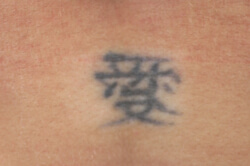
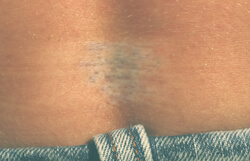 The two products we hear the most about are the EliminInk and Wrecking Balm. A quick and simple internet search will lead you scarce information on these other than YouTube videos of folks trying them out! Even the official manufacturer’s site gives you no information on what is in these products, the science behind them or any studies indicating that they are safe or effective!
The two products we hear the most about are the EliminInk and Wrecking Balm. A quick and simple internet search will lead you scarce information on these other than YouTube videos of folks trying them out! Even the official manufacturer’s site gives you no information on what is in these products, the science behind them or any studies indicating that they are safe or effective!
EliminInk is a system that must be tattooed into the skin by a “trained” tattoo artist. It claims to break up the ink and bring it to the skin’s surface, thereby “removing” the tattoo. The company claims it is superior to laser tattoo removal and much quicker. We still can’t find official information on what exactly is being tattooed into the skin, but we believe it may contain tannic acid. Tannic acid is an oxidizing agent that can break up tattoo ink, but remember, this is inside your body! There are serious safety concerns about this ingredient’s effect on the liver as it is metabolized out of your system. In addition, anytime a device like a tattoo gun is used to remove ink, the possibility for scarring rises dramatically. Scarring may include keloid (raised) scars as well as areas of hypopigmentation (loss of skin pigment).
Wrecking Balm is another tattoo removal system that can be done at home. It claims to be effective and much cheaper than laser tattoo removal. The system is supposed to work by using a device that “abrades” a tattoo fading cream into the skin. Again, there’s not much information on what’s in the cream or the science on how this system can effectively remove tattoo ink that’s embedded deep within the dermal (deeper) layer of skin.
The bottom line for both of these products is that there is no other FDA approved way to remove a tattoo other than a laser. FDA approval means that a device or a drug has undergone a series of scientifically devised studies to prove it is safe and effective for you. We understand that laser tattoo removal can be time consuming and costly. If you’re interested in results and care about what you put on or into your body, there’s only one proven choice – lasers.
If you’ve had acne, you know if can cause serious physical and psychological changes. If the painful bumps and constant breakouts weren’t bad enough on their own patients. Just like you also deal with some type of scarring from their acne.
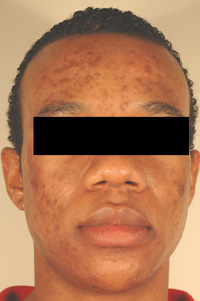
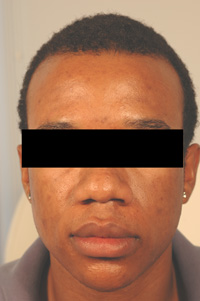 Generally, acne scars come in two varieties: textured (raised, pitted or bumpy) and discolored (red or brown). The discolored type may also be called “hyperpigmented” because it usually causes scars that are darker than the surrounding skin. Textured scars tend to be the more permanent kind. Hyperpigmented or red scars will generally get better with time, but for lots of patients. They want the discoloration to fade more quickly. This is where medical grade lasers and topical therapies can help.
Generally, acne scars come in two varieties: textured (raised, pitted or bumpy) and discolored (red or brown). The discolored type may also be called “hyperpigmented” because it usually causes scars that are darker than the surrounding skin. Textured scars tend to be the more permanent kind. Hyperpigmented or red scars will generally get better with time, but for lots of patients. They want the discoloration to fade more quickly. This is where medical grade lasers and topical therapies can help.
Different skin types (colors) tend to get different types of discolored scars from acne. If you have darker skin (Hispanic, African-American), then you probably tend to get the hyperpigmented or darker type of scarring from your acne. If your skin is lighter (Caucasian), then you may have more reddish discoloration after your acne clears. Either way, there are treatments available that can help.
For red acne scarring, the pulsed dye laser can be used to gently lessen that appearance of redness that comes after the inflammation of acne. For excess pigmentation, q-switched lasers and hydroquinone bleaching products are effective in breaking up excess melanin (pigment) that your skin makes in response to a breakout. Laser treatments can be done in a short amount of time in the office and there is no downtime afterward. The pulsed dye laser can only be used on lighter skin types, but the q-switch laser is safe for all skin types.
We also use skin care products to help fade hyperpigmented acne scars. Our gel solution can be used along with the laser or on its own, and it works to slow down the skin’s production of melanin (pigment) and remove brown spots that are already there. Hydroquinone is often called “bleaching creams”, but the product doesn’t fade your natural skin color. They work only where it’s making too much pigmentation.
Textured (indented) acne scarring to help your skin look smoother and more even is treated using laser resurfacing. At Celibre Medical, we offer comprehensive treatment of acne scarring and can design a treatment plan that fits your skin, lifestyle and budget. It often takes more than one type of treatment to get the very best results, but hang in there! The results can be pretty amazing!
As the weather warms up, you may be thinking about your change in wardrobe. Does the idea of shorts, dresses, and skirts make you think twice about your legs? If so, this may be a good time to consider the many services we offer for very common skin conditions.
Spider veins a very common and frustrating condition for young and older alike. A good alternative to traditional sclerotherapy are laser treatments. By targeting the hemoglobin in the blood vessels, the laser effectively destroys these small, unnecessary spider veins. There is no downtime and treatments are safe for all skin types.
If you’ve thought about this service before, there is no better time than right before the summer to start the process. If you are tired of shaving, razor bumps, and waxing then consider a permanent solution. At Celibre, we have 3 different lasers for laser hair removal which make treatments safe for all skin types. By using a variety of wavelengths and technology, we are able to customize a treatment plan that will offer the safest, most effective outcomes.
Oftentimes, patients will come to us with concerns over brown discoloration also known as pigmented lesions. This discoloration may be a result of traumatic scarring, freckles and moles, insect bites, and more. We utilize Q-Switched laser technology which offers fading and resolution of dark pigmentation with no downtime. This modality is safe for all skin types.
At Celibre, we focus on patient education. We want our patients to understand and participate in the decisions that make up their care plan. To this end, our knowledgeable medical staff are here to help you weigh the benefits and risks of our Laser treatments and Injections.
Our team would be pleased to offer a complimentary consultation to address your skin care goals. A good starting place is to gather information and view before and after photos of Celibre patients in our photo gallery.
At Celibre, we stay at the forefront of research and best practices so that we may offer the most appropriate and effective injections and laser treatment plans for our valued patients. Please give us a call to learn more about laser treatments and injections.

